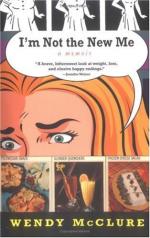[Illustration: GOYA. FROM A PORTRAIT ETCHED BY HIMSELF.
This portrait is the frontispiece to a series of etchings by Goya.]
Before leaving Goya for men whose works are their only history, a characteristic incident, which caused his flight from Spain to Bordeaux in France, must be told. In 1814 Wellington was in Madrid and sat for his portrait to Goya. After the first sitting, the soldier presumed to criticise the work; whereat Goya, seizing a cutlass, attacked him, causing the future hero of Waterloo to flee for his life from the maniacal fury of the painter. It is said that, later, peace was made between the two men, and that the portrait was achieved; but for the moment Goya found safety in France, together with his long-suffering wife, who had incidentally borne him twenty children. At the green old age of eighty-two Goya died at Bordeaux, April 16, 1828.
[Illustration: ST. JUSTINA AND ST. RUFINA. FROM A PAINTING BY GOYA IN THE CATHEDRAL AT SEVILLE.
These are the patron saints of Seville. The legend has it that they were the daughters of a potter and followed their father’s trade, giving away in charity, however, all that they earned more than was sufficient to supply their simple wants. At the time of a festival to Venus, they were requested to supply the vessels to be used in her worship, and on their refusing, they were dragged before the prefect, who condemned them to death, July 19, A.D. 304. They are generally represented with earthen vessels and the palms of martyrdom; in this case, the broken statue of Venus lies in the foreground. The Giralda tower, the chief ornament of Seville, and the prototype of the Madison Square tower in New York City, is their especial care, and it is believed that its preservation from lightning is due to them.]
No greater contrast could be devised than the four works which follow, either in the character of the art or in the uneventful respectability of the painters’ lives. They are all typical of a class of pictures which has been popular in England, from the time of Hogarth to the present day. The earliest of them is the “Blind Fiddler” of Sir David Wilkie, which was exhibited at the Royal Academy in 1807. The dates at which the others, by Mulready, Webster, and Leslie, were painted would preclude their appearance here, if strict chronological sequence were imposed, as they were painted about 1840. It is instructive, however, to group them together, to show that these artists and their followers, who were legion, thought at least as much of subject as of method. Not that the latter quality is lacking. On the contrary, it is only too evident; but it is a method of convention. No one would imagine for a moment, in looking at any one of these pictures, that he was admitted an unseen spectator to some scene of intimate family life. It is this quality which the great Dutchmen in all their scenes of familiar life preserved; and when we look at a Pieter de Hooge, for instance, there is no suspicion that the homely scene has been arranged for our delectation. In its transplantation from Holland, however, English art lost just this quality.




